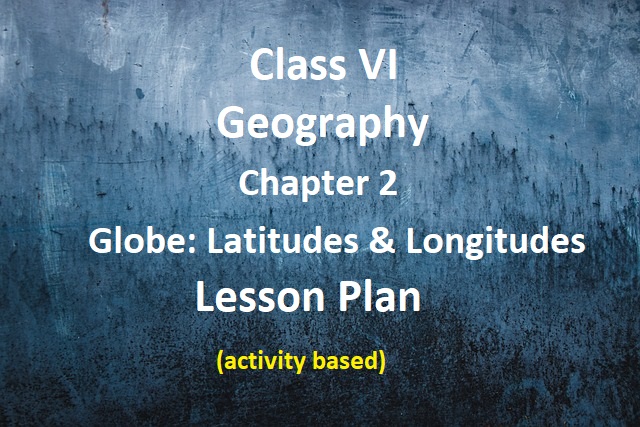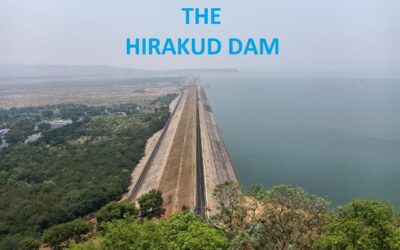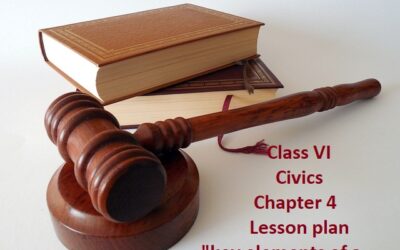Geography Chapter 2 Globe: Latitudes & Longitudes Lesson Plan
Class VI Geography Chapter 2 Lesson plan is the road map for any teacher. Moreover, effective lesson planning provides the students with the necessary structure and direction. It also takes care of the diverse needs of our students. Class VI Geography Chapter 2 Lesson plan provides better resources that are integral to students. This lesson plan of class VI is child centric and allow teachers to critically reflect on and improve our teaching and learning practice. The lesson plan mainly focuses on increasing engagement and promoting greater independence. Class VI Geography Chapter 2 lesson plan caters the need of every child.
Social Science Class VI Geography Chapter 3 Motions Of The Earth – Worksheet
For Class VI Geography Chapter 1 Lesson Plan: The Earth In The Solar System – Activity Based you may click on the given link.
Geography Chapter 2 Globe: Latitudes & Longitudes Lesson Plan
Topics covered:
- Geography Chapter 2 : Globe: Latitudes and Longitudes
__________________________________________________________________________________________________
General Objective:
Firstly, to develop interest in the subject.
Secondly, to apply the knowledge practically in real life.
Finally, developing scientific temperament among the students.
Specific Objective:
- Students will acquire knowledge about the Important lines on Globe
- They will also know about the difference between Latitudes and Longitudes
- Students will also learn about the importance of these lines on globe
Checking Previous Knowledge:
At first, the teacher checks the previous knowledge of the students by asking a question.
Have you seen lines on the globe?
What are these lines called?
Read about latitudes and longitudes in Hindi “अक्षांश और देशांतर रेखाएँ” हमारे लिए क्यों उपयोगी हैं ?
Introducing Topic:
Now, the teacher introduces the topic by asking basic questions like:
Teacher: Have you ever seen lines on the globe?
Student’s response: Yes teacher.
Teacher: Do you know what are these lines called?
Student’s answer: Latitudes and Longitudes.
Teacher: How many latitudes are there?
Student’s answer: Teacher 180, 90, 360 (different responses from children)
Teacher: Does these lines og latitudes and longitudes really exists on earth?
Student: No teacher. These are imaginary lines.
Teacher: Then, what is the use of these lines?
Students are unable to answer this question.
Statement of Topic
Now, the teacher will announce the topic.
Today we are going to study about Latitudes and Longitudes
Teaching Method:
First, the teacher plays an interesting video on the smart board.
http://https://www.youtube.com/watch?v=TNZKdv-B6b4
Teaching aids:
Text Book, Black Board, smart board, Globe
Technique:
Interactive with common examples.
However, the teacher uses various methods to make the topic interesting by interacting with the children in the class.
By asking very simple questions, the teacher draws the attention of the class.
Also make sure that the children are involved in the discussion.
Therefore, While interacting with the students, the teacher also tells about important latitudes and Longitudes.
Geography Chapter 2 Globe: Latitudes & Longitudes Lesson Plan
Content/ Teaching Points:
- Introduction
- Shape of our earth
- Parallels of latitudes
- Important Parallels of latitudes
- Heat zones of the earth
- What are Longitudes
- Longitude and time
- Why do we have standard time?
First Activity : Day 1
Draw and label the important lines of Latitudes :
a) Equator
b) Tropic of Cancer
c) Arctic circle
d) North Pole
e) Tropic of Capricorn
f) Antarctic circle
g) South Pole.
Objective: To know about the important lines of latitudes on Globe.
Duration: 20 minutes.
It will be a classroom activity which will not be assessed.
Second Activity: Day 2
Draw and label the important lines of Latitudes :
Objective: To know more about lines of meridians (longitudes)
a) 0 degree Longitude
b) 180 degree longitude also known as International Date Line – why it is not straight?
c) Longitudinal extent of your country.
d) Indian standard time meridian (IST)
Duration: 20 minutes
It will be a classroom activity which will not be assessed.
Class work:
i) Objective and short answer type questions will be done.
ii) Long answer type questions will be discussed and done in the class.
Home-work:
Draw or paste or make a model of Globe using waste materials.
Values imparted:
- To respect time differences.
- Understanding about the problems of people living near the poles.
Multidisciplinary Integrated learning:
- Hindi and English: Discussion on Latitudes and Longitudes
- Art: Locating a place on globe with the help of latitudes and longitudes.
- English: Debate on using one time for the whole world.
- Science: animals and plant life found between Frigid, Temperate and Torrid zones.
Assessment Criteria:
Indicators
- Relevance of Content
- Presentation of information gathered
- Awareness of the information gathered
- Creativeness
- Analytical Skills
Learning Outcome:
After the completion of this chapter, students will be able to
Firstly, Exhibit clear understanding of various terms like Latitudes and Longitudes.
Secondly, Calculate time using Longitudes How to calculate time using longitudes explained Step by step.
get familiarized with time difference and
Finally, develop clear understanding of Frigid, Temperate and torrid zones.
Remedial Measure:
Each One – Teach One.
Children sitting on the left side of the row will explain the chapter to the children sitting on their right.
Class VI Social Science Lesson Plan For The Month Of June – July
Geography Chapter 2 Globe: Latitudes & Longitudes Lesson Plan
Conclusion:
I hope Social Science Lesson Plan of class VI will be of great help to the new teachers.
At last, I request you to comment and subscribe.
So that, you get the notification of the next lesson plan.
Was this lesson plan helpful to you? Write your views in the comment box.
Class VI Geography Chapter 1 Lesson Plan: The Earth In The Solar System – Activity Based
Class VI History Chapter 1 Lesson Plan: What, Where, How and When – Activity Based
Social Science Class VI Geography Chapter 3 Motions Of The Earth – Worksheet





Sir please provide 6 class social science term 2 or September to annual lesson plan
O.k. we are working on it. Very soon you will find it on shapingminds.in
Keep visiting.
It was very usefull
Thanks.
Really helped me a lot. Very useful and nicely done. Thanks
Thank you Mr. Bhutia for your positive and inspiring response.
Keep visiting and sharing shaping minds in
It was helpful. I cant find october to nevember lesson plan.
Thank you Anisha. We are working on it. Very soon you will find October to November class VI lesson plan.
Please upload fast
class vi social science lesson plan for the month of October – November is now available on my website. Pl. visit shapingminds.in
class vi social science lesson plan for the month of October – November is now available on my website. Pl. visit shapingminds.in
Hi Can I get Social science class VI all chapter’s lesson plan please?
Hi Rajeev. Most of the lesson plans of class vi is already there. We are working on the left out chapters. Very soon it will be published. Keep visiting shapingminds.in